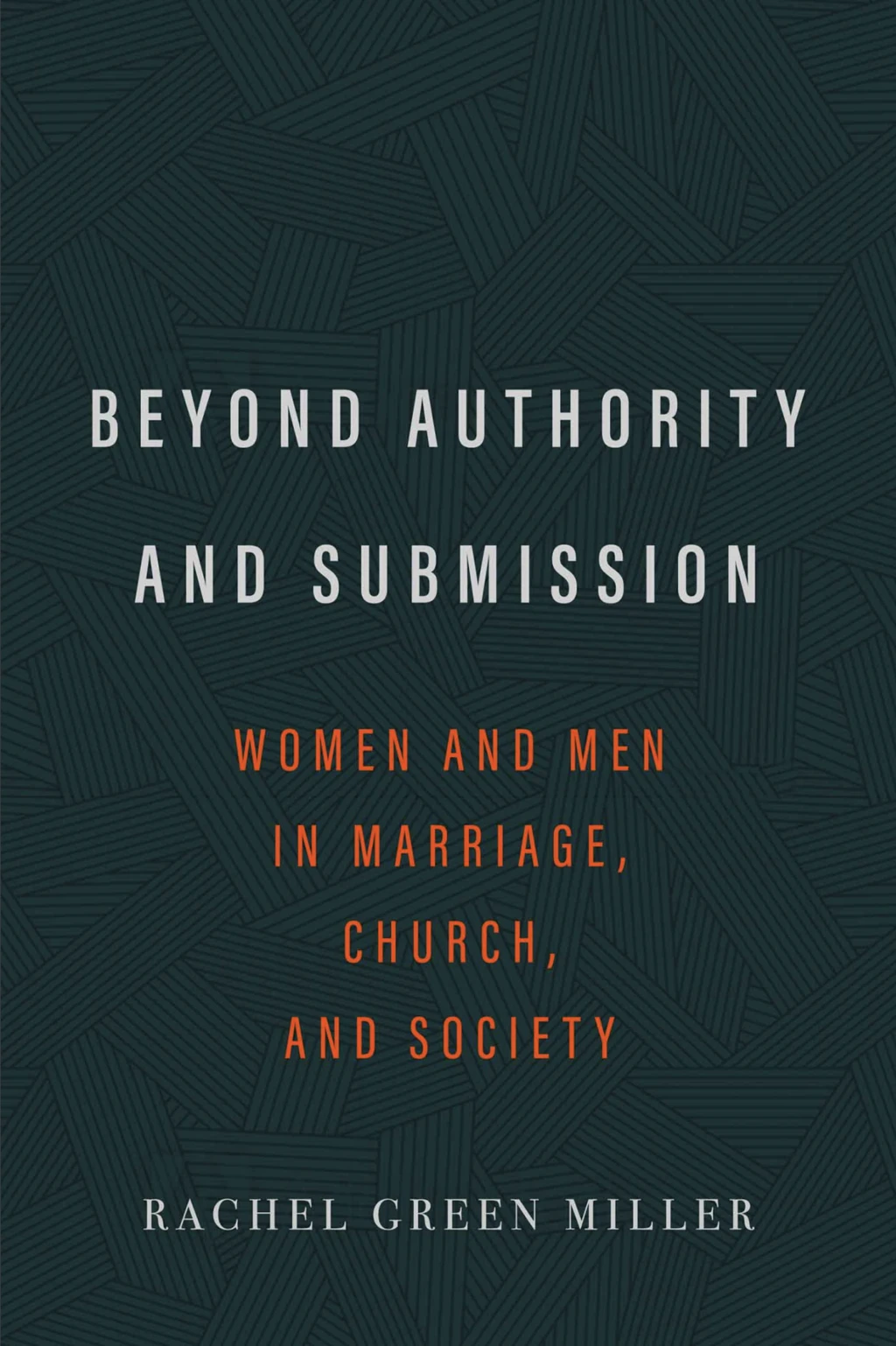
Rachel Green Miller
Reviewed by: Michael A. Chartowich
Beyond Authority and Submission: Women and Men in Marriage, Church, and Society, by Rachel Green Miller. P&R 2019. Paperback, 280 pages, $13.50. Reviewed by OP elder Michael A. Chartowich.
Every once in a while, a book comes along that challenges the status quo in conservative circles. Rachel Green Miller, an OPC member living in Texas, has done this by writing Beyond Authority and Submission. Some will likely have issues with some of her positions. However, we would do well to listen to our sister and take to heart the concerns she raises.
Miller’s chief concern is that authority and submission dominate how we view the relationship of men and women in conservative churches. She argues that “the hyper focus on authority and submission has done considerable damage to relationships between men and women in the home, church, and in our societies. Instead of promoting unity, interdependence, and service, this fixation on authority and submission as the crucial distinction between men and women promotes antagonism and disunity” (257).
In making her case, Miller divides the book into six parts. In part one, she defines authority and submission and shows how they are biblical concepts. Authority and submission in marriage and the church (members submitting to ordained male officers) is good and should be acknowledged by Christians. In part two, she examines the beliefs of the Greeks, Romans, and Victorians. She argues that many of the views held about women in these cultures were pagan or distortions of Christianity. Women were believed to be inherently inferior to men and were not allowed to hold public office, vote, or control property in many cases. There were also double standards for women and men in regard to piety or sexual morality. Many of these ideas are deplorable and should be rejected by Christians. Miller argues that early feminists reacted to these injustices and brought helpful change. However, later feminists started to advocate for unbiblical practices like abortion. This led Christians to become suspicious of all feminism.
In part three, Miller discusses the nature of men and women. She rejects the teaching of the eternal subordination of the Son to the Father. Surprisingly, she does not give many biblical reasons as to why she rejects it. She then argues that in Scripture many of the attributes normally ascribed to men (strength, assertiveness, providing) are also said of women, and ones normally ascribed to women (gentleness, responsive, helping) are also said of men. This is true in many cases, but I found myself left with many questions. What then is masculinity and femininity? Why did God make men and women different? Why does he call men to lead in marriage and the church? Miller rejects many stereotypes, but spends little time building a positive case for masculinity and femininity.
Parts four through six address marriage, the church, and society. Miller makes several good points in reinforcing her argument that sometimes we wrongfully go beyond what Scripture teaches. I believe that she rightly rejects the idea, held by some, that all women are called to submit to all men in some general way rather than just to their own particular husband and church leaders. She also challenges the suspicion that some church leaders show when women want to learn theology. As part of the body, women should also learn theology to be protected from false doctrine and not be limited to only hospitality and children’s ministries. Some complementarians, however, will likely differ with her in several places. For example, Miller does not believe that women have a biblical calling to be particularly oriented toward the home. She also implies that prohibitions against women teaching men theology at co-ed Christian conferences or in co-ed adult church groups are extrabiblical.
Some of Miller’s methods of biblical interpretation are problematic. For example, she uses the context of one passage to interpret another. Referring to Titus 2:5 and 1 Timothy 5:14, she says, “First Timothy gives us the context for these passages” (252). She then cites 1 Timothy 5:13 and implies that Paul’s directions to focus on the home were a result of the widows being busybodies and not because women have a unique orientation to the home. Whether or not this is true in 1 Timothy, it does not follow that this was also happening in Crete when Paul wrote Titus 2:5.
In conclusion, Miller does a good job of exposing some unbiblical ways of viewing men and women. However, her questionable interpretation of some key texts (and her neglect of others) detracts from the overall persuasiveness of her thesis.
November 16, 2025
November 09, 2025
November 02, 2025
October 26, 2025
October 19, 2025
October 05, 2025
Raising Sexually Faithful Kids and
Parenting Boys and Girls in a Gender-Confused World
September 28, 2025
© 2025 The Orthodox Presbyterian Church